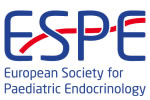hrp0095p1-74 | Fat, Metabolism and Obesity | ESPE2022
Metabolic risk assessment in children and adolescents using the tri-ponderal mass index
Seo Young-Jun , Suk Shim Young , Sang Lee Hae , Soon Hwang Jin
hrp0089p1-p060 | Diabetes & Insulin P1 | ESPE2018
IPEX as a Result of Mutations in FOXP3 Two Case Reports and Review of the Literature
hrp0089p3-p169 | Fat, Metabolism and Obesity P3 | ESPE2018
Comparison of the Effectiveness of a Battery Powered and Manual Toothbrush in Removal of a Dental Plaque for Good Oral Hygiene in Adolesents with Over-Weight
hrp0089p2-p209 | GH & IGFs P2 | ESPE2018
A Novel Mutation of Type I Insulin-like Growth Factor Receptor (IGF1R) Gene in a Severe Short Stature Pedigree Identified by Targeted Next-generation Sequencing (NGS)
Yang Yu , Huang Hui , Li Yang , Xie Liling , Chen Ka , Xiong Ting , Wu Xian
hrp0082p1-d2-212 | Reproduction (1) | ESPE2014
A Novel MKRN3 Mutation Discovered in a Korean Girl with Central Precocious Puberty
Sang Lee Hae , Sub Lim Jung , Soon Hwang Jin , Young Kim Eun
hrp0082p2-d2-582 | Sex Development (1) | ESPE2014
Down Syndrome and Disorders of Sex Development: Only Coincidence or More?
Pupo Joyce , dos Santos Tiago Jeronimo , Steinmetz Leandra , Cominato Louise , Manna Thais Della , Filho Hamilton Menezes , Kuperman Hilton , Dichtchekenian Vae , Setian Nuvarte , Damiani Durval
hrp0084p2-316 | DSD | ESPE2015
Partial Androgen Insensitivity: Syndrome or Symptoms?
Charles Sultan , Pascal Philibert , Nicolas Kalfa , Laurent Maimoun , Francoise Audran , Nadege Servant , Laura Gaspari , Francoise Paris
hrp0095p2-191 | Growth and Syndromes | ESPE2022
A case report of gonadal Y-chromosome mosaicism 45, X Turner syndrome complicated by HCG-secreting gonadoblastoma
Zheng Rujiang , Ma Huamei , Liu Juncheng , Chen Huadong , Liang Jianbo , Chen Hongshan , Li Yanhong , Chen Qiuli , Zhang Jun , Guo Song , Wang Bing , Du Minlian
hrp0095p2-272 | Sex Differentiation, Gonads and Gynaecology, and Sex Endocrinology | ESPE2022
A Rare HSD17B3 Gene Variant Presenting Virilization at Puberty: Management and Treatment in Adolescent Age.
Berveglieri Vittoria , Folgheraiter Valentina , Di Paola Rossana , Bertelloni Silvano , Baldinotti Fulvia , Dal Ben Sarah , Cavarzare Paolo , Antoniazzi Franco , Gaudino Rossella
hrp0089fc3.2 | Diabetes and Insulin 1 | ESPE2018
Genome-Wide Meta-Analysis Identifies a Novel Low Frequency STK39 Variant of Large Effect on Risk of Type 1 Diabetes
Forgetta Vincenzo , Manousaki Despoina , Ross Stephanie , Tessier Marie-Catherine , Marchand Luc , Qu Hui-Qi , Bradfield Jonathan P , Grant Struan FA , Hakonarson Hakon , Paterson Andrew , Piccirillo Ciriaco , Polychronakos Constantin , Richards J Brent



